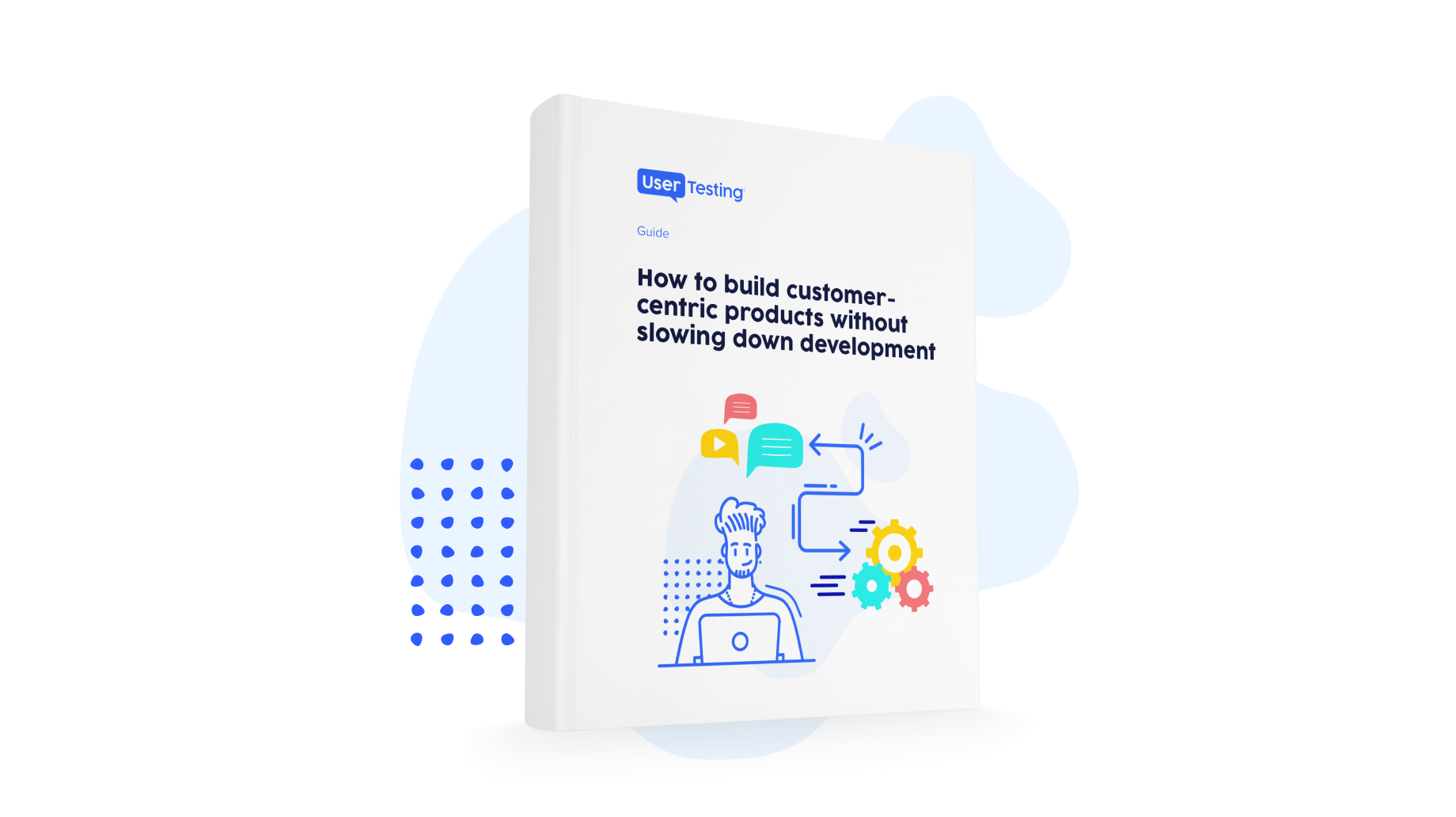
Risk mitigation in digital product development

Launching any digital product comes with some degree of risk. While every founder, product manager, and the developer has high hopes for their product, the reality is that 95% of new products released in any given year will fail. In the worst-case scenario, a company could spend millions of dollars and months building a product that no one wants to use.
In today’s challenging economy, restricted organizational budgets and reduced consumer spending mean product leaders have even more at stake than usual. Fortunately, there are steps you can take to mitigate risk and increase the chances that your product will succeed.
In this article, we’ll explore the most common risks in digital product development and share advice for mitigating your product decision risk to set your product up for the greatest chance of success.
What are the most common risks in product development?
While there are risks that can sabotage a product’s chance of success in the market, most of the common risks fall into a handful of categories. Some products never reach product-market fit, some suffer from bugs and usability issues, some struggle to find the right pricing, and others fail for other reasons.
For this guide, we’ll focus on the risks that your organization has some degree of control over and not risks that are completely outside of your control, such as what your competitors are doing or the state of the economy.
Start with these risk categories to identify areas of risk that could impact your digital product.
Product-market fit risks
One of the risks that are hardest to recover from is developing a product that doesn’t have an eager market ready for its arrival. When products don’t match the market need, fail to connect with the right users, or even when they’re ahead of their time, it can spell disaster for the company.
It’s unfortunately common to find products that never reach product-market fit because their developers pursued a product idea without thoroughly vetting and validating it with the market first. When a company rushes into building a product without conducting thorough concept validation research first, they’re working on the assumption that this particular product is the right solution to a problem, and they’re also assuming that this problem is a problem that exists. This can lead down a dangerous path of sinking valuable resources into a product that consumers won’t use, resulting in devastating losses.
Budget risks
Projects of all types frequently need help staying within the original budget, but for new products, budget issues can lead to severely delayed launches or unwanted compromises on quality.
From unexpected expenses to increased vendor rates to unrealistic early budgets, it’s easy to see how to budget risks can derail a new digital product. While some budget risks can be total surprises and outside of your control, other risks can be more easily predicted and mitigated.
One of the most common budget risks with new products is scope creep, where the project requirements, list of features, and scope of work expand beyond the original plan. This can happen when the team has too many good ideas for product features and design elements or when stakeholders insist on releasing a near-perfect version of the product rather than an MVP. As new features and elements get added, the time and budget required to build, test, and refine them can jeopardize the product.
Schedule risks
The counterpart to budgetary risks is timeline risks. Time is money, and delayed timelines usually mean budget overages as well.
As issues arise in the development and new features get added, the product launch timeline can extend longer and longer. This can lead to missing important deadlines, or it can lead to rushing through critical steps to catch up on time—forcing developers to scramble to complete further time-consuming rework.
User experience risks
Teams strapped for time and budget may be tempted to skip user testing, but this leaves a product vulnerable to countless user experience risks.
Even a technically functional product can suffer from a wide range of UX issues:
- Unclear directions, terminology, or icons
- Confusing onboarding or a difficult learning curve
- Messaging that doesn’t resonate with the target market
- Awkward navigation
- Too much effort is required to do basic tasks
- Counterintuitive user workflows
- Lack of a compelling hook to bring users back
Issues like these can sabotage a product’s chances of success, leaving users frustrated and likely to churn, leave negative reviews, or become detractors. Unfortunately, it’s often too difficult for internal stakeholders to proactively identify these UX risks because they’re already too familiar with the product, which is why it’s so critical to get feedback from the target users throughout development.
How do you mitigate risk in product development?
Risk is inevitable in product development. While you’ll never be able to eliminate the risk, the chances of success of a digital product depend on how well these risks are managed throughout the development process.
Risk mitigation is identifying, evaluating, and reducing the risks that can impact the success of a project. In digital product development, risk mitigation strategies are used to ensure that the product meets its objectives: delivering value to customers, growing revenue, and establishing a competitive edge.
You should aim for proactive risk mitigation strategies (preventing risks from occurring) rather than reactive strategies (after risks have occurred).
To de-risk a product launch, follow these steps throughout the development cycle and as new risks arise.
1. Identify areas of risk
Even in the earliest stages of product development, asking critical questions and considering potential risks is important.
Product leaders should consider discussing these questions among their teams:
- If this product were to fail, why might that be?
- What competitive threats exist in the market?
- What are the weaknesses of this idea?
- Have there been similar products in the past that failed? If so, why?
- How might this concept be misinterpreted or misunderstood by the market?
- Will this product only make sense in certain environments or contexts?
- What will our biggest critics say about the product?
- Are there any areas where we’re relying too heavily on partners, vendors, flash-in-the-pan trends, or other external factors?
- What are we overlooking because we’re too close to the product concept?
These questions aren’t intended to deflate the team’s enthusiasm or sound overly negative. If your team is resistant to having these conversations, remind them that while these discussions can feel discouraging at first, exploring the potential risks for the product before development begins will set you up for a much higher likelihood of success.
Throughout the product development cycle, continue asking these questions, and keep a keen ear out for additional comments and questions from your test participants during user testing.
You may choose to explore some of these risk-related questions directly with users who test your early prototypes, such as:
- What, if anything, would stop you from using this product?
- Does anything about this product raise any red flags for you?
- What potential downsides could you see in using this product?
- Is there anything about the experience or messaging that feels offensive, frustrating, or “off”?
Whereas in most user testing scenarios, you want to avoid swaying users toward positive or negative reactions, if you’re focused on mitigating risks, you want to know every potential pitfall. Some product leaders think of this as “testing to invalidate” or critical user testing. Again, it may feel like you’re dwelling on the negative, but these probing questions can help you reveal your blind spots.
2. Assess potential risks
Once potential risks have been identified, they can be assessed based on their likelihood and impact.
For each potential risk, determine how likely it is to occur and what the outcome will be if the risk does occur. To quantify your risk assessment, you can assign the likelihood and impact a high, medium, or low score, just as a product manager might when prioritizing new features.
For example, one of your potential risks is reliance on a partner for an integration. If the partner has to deprioritize the project or fails to meet your deadlines, it could jeopardize a critical feature of your product. You might determine that there is a medium likelihood that this would occur, and the impact would be fairly significant, causing a delayed launch or an incomplete product.
At this stage, communication is the name of the game. Ensure all relevant internal stakeholders are aware of potential risks so that you have the full force of the team focused on reducing the chance of failure. No team wants to find out about potential risks after they’ve already occurred, when the issue is much more difficult and costly to correct—or after it’s too late to do anything about it.
A clear understanding of each potential risk will allow you to arrange backup plans or alternative approaches.
3. Prioritize risks to address
After you’ve assessed your risks, you can begin to prioritize them by determining which risks are most likely to occur and have the greatest impact. Potential risks with a high likelihood of occurring and a high impact on the product will be the highest priority, and you’ll need to develop a plan for addressing them.
Depending on the type of risk, this could include proactively avoiding the risk, making a contingency plan for what to do if the risk occurs, or transferring the risk to another feature, product, or area of the business.
For example, perhaps you’ve identified that given your current launch goals—the aggressive project timeline is a risk. If a team member has to miss more than a couple of days of work over the next few months, the project could be delayed, which seems highly likely to happen. Missing the deadline could put your business in a dangerous place with demanding investors, making it a high-impact risk.
You decide to flag this risk as a high priority. Your plan to address it could include proactively hiring additional team members, sourcing temporary contractors to help out if one of your team members leaves or becomes ill, or identifying other projects that could be deprioritized if you need all hands focused on this product launch.
4. Track and monitor risks
During the development cycle, periodically check how your risks are progressing. Have any risks changed the likelihood or impact? Have any new risks arisen, or are there any areas that are no longer at risk?
Again, this is when it’s necessary to communicate with stakeholders about any changes. Suppose the budget is at a higher risk now than two weeks ago. In that case, it’s important to proactively communicate with budget approvers or the finance team to flag any concerns rather than waiting until the project is over budget.
When unexpected challenges inevitably arise, you’ll be thankful you used a system to assess and prioritize your risks instead of being caught off guard by them.
How to leverage human insight to de-risk your product decisions
The old saying is true: you are not your user. Even the most experienced product teams need to regularly listen to real people in their target market at every stage of development. Digital product leaders need to champion human insight as the most valuable step in their product development process, which may require a bit of a shift in thinking on the part of teams, stakeholders, and executive leadership.
Getting first-person insights from real people can reduce many of the risks in product development, from validating an early concept to prioritizing the most necessary features to avoid scope creep to identifying and fixing user experience issues before a product is released.
The most important thing any digital product team can do to mitigate risk is to test their product with their target market as early as possible. Getting feedback on early prototypes—before any code is written—can save significant time and budget. After all, it’s much easier and more cost-effective to make changes to a prototype than to a live product.
As development progresses, human insight at every stage can help product teams stay efficient while reducing the risks for their product. UserTesting offers a series of test templates for de-risking your product decisions, which can be used for fast user feedback in the Human Insight Platform. Templates help you ask the right questions at the right time to ensure your digital product is on the way to success.

Build better products faster with user feedback
Discover how to implement customer-centric product development without sacrificing speed.





